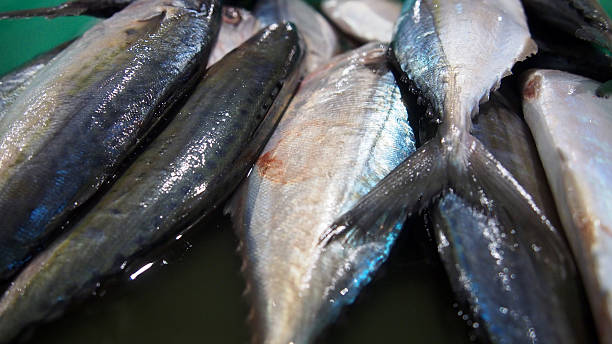Introduction – Current State of Play: The Fish Sector in South Africa
South Africa’s fish and seafood industry is in the middle of a dramatic shift. From new trade developments to environmental hurdles and rising consumer trends, the landscape is evolving fast. Export volumes are climbing, sushi is becoming a local dining favorite, and the government is pushing aquaculture like never before.
At the same time, businesses are juggling supply chain disruptions, port inefficiencies, and volatile global prices. For companies sourcing fish from South Africa, staying updated isn’t just a nice-to-have—it’s a survival skill. Whether you’re an importer, distributor, or retailer, understanding these rapid changes is key to making smart sourcing decisions in 2025.
Deep Dive – Market Movers: Recent Developments and Consequences
Export Performance on the Rise
In 2024, South Africa’s seafood exports jumped by 8.6%, hitting R9 billion. That’s no small feat. Fresh fish made up 40% of those exports, and mollusks like abalone and cuttlefish took another 30%. The biggest buyers? Spain (25.5%), Italy (18.2%), and the United States (9%).
What’s especially interesting is that the U.S. alone consumed 60% of South Africa’s fresh whole fish exports. That’s a strong signal of trust and demand from one of the world’s most competitive markets.
Sushi Craze Sweeps the Nation
On the home front, the sushi boom is real. It now accounts for 6% of the national restaurant scene. That’s a big jump, showing how urban South Africans are embracing healthy and convenient food choices. This shift is pushing local suppliers and importers to adapt fast—think more chilled logistics and high-quality fresh fish.
Aquaculture: The New Frontier
Wild-caught fish is under pressure, so South Africa is turning to aquaculture. The Draft Aquaculture Development Bill, rolled out in November 2023, aims to double local production by 2030. That’s ambitious—but necessary. Feed supply remains a hurdle, so the industry is exploring alternative options to sustain growth.
Supply Chain Bottlenecks and Price Pressures
Retailers like Mr Price are feeling the pinch from global and local supply chain glitches. Port delays, rising shipping costs, and logistics hiccups are making it harder to keep shelves stocked. That affects everyone in the fish ecosystem—from fishers to restaurants.
Mixed Results from Industry Giants
Sea Harvest Group had a great 2024, with a 16% revenue increase to R7.2 billion and a 26% rise in operating profit. Meanwhile, Oceana Group saw their revenue go up just 2.9%—but their operating profit slumped by 33.5%. The message? Navigating this market isn’t easy, even for the big players.
Sustainability Gains for Local Communities
In a notable move, the South African government awarded 15-year fishing rights to 62 small-scale cooperatives in the Western Cape. This is a big win for sustainability and inclusion, bringing more people into the formal economy and encouraging responsible fishing practices.
Top 6 Verified Fish Suppliers in South Africa – Adapting to Today’s Market
When it comes to sourcing top-quality fish from South Africa, these are the suppliers making waves in July 2025. They’re verified, active, and tuned into the latest market shifts. Supplier data was verified via Freshdi, a trusted B2B sourcing platform offering real-time market intelligence and supplier insights.
1. Prime Export Group Pty. Ltd.
- Known for premium-grade seafood.
- Strong export presence in Europe.
- Positive Freshdi buyer reviews for timely delivery and product consistency.
2. Docks Brockers
- Specializes in deep sea fish.
- Holds key sustainability certifications.
- Offers customized packaging for international clients.
3. Temla
- Aquaculture-focused company with cutting-edge facilities.
- Supplies to both local and international markets.
- Known for high-quality abalone and cuttlefish.
4. Ewange Group Supplier
- Offers whole, cleaned mackerel and other fresh options.
- Strong logistics network for quick shipments.
- Competitive pricing amid market volatility.
5. SOURCE GLOBAL TRADING GROUP
- Specializes in frozen eel and exotic seafood.
- Caters to niche demands in Asia and Europe.
- Responsive to RFQs and custom orders.
6. Balobi
- Works closely with coastal communities.
- Committed to sustainable fishing.
- Supplies traceable and ethically caught products.
Dynamic Ranking Note:
Keep in mind, rankings can shift monthly based on actual RFQ activity, buyer reviews, and export volumes. Platforms like Freshdi offer real-time rankings such as “Suppliers of the Month” to reflect who’s truly delivering results in a dynamic market.
Market Navigation – Strategic Responses to The Current Fish Landscape in South Africa
What’s Working Right Now?
South Africa’s approval to continue exporting to the U.S. beyond 2026 is a major win. This recognition from the U.S. National Oceanic and Atmospheric Administration affirms the country’s marine protection standards. It not only keeps the door open to a lucrative market but also boosts the country’s image as a responsible fishing nation.
Add to that the 8.6% rise in seafood exports in 2024, and you’ve got a market that’s still growing despite global uncertainty.
Where Are the Hazards?
It’s not all smooth sailing. Environmental conditions—think heatwaves, heavy rain, and ocean temperature swings—are affecting catch rates. That’s driving up costs and shrinking volumes. At the same time, global demand for premium products like abalone and lobster has dropped, especially in China and Hong Kong.
Strategic Sourcing Adjustments
To ride out the bumps, companies are:
- Diversifying markets: Looking beyond Europe and the U.S. to Africa, the Middle East, and South America.
- Investing in aquaculture: To reduce reliance on wild stocks and stabilize supply.
- Reevaluating logistics partners: To counteract port delays and shipping cost spikes.
Short-Term Product Outlook
- Fresh whole fish remains in high demand, especially in the U.S.—a smart bet for exporters.
- Frozen products like eel and mackerel are seeing steady demand in Asia.
- Sushi-grade fish is gaining traction locally, opening opportunities for chilled logistics providers and local fish farms.
Macro Trends Affecting Buyers
Two key developments are shaping the buying environment:
- Retail sales are up 2.3% year-on-year as of August 2025, but momentum is slowing. Buyers need to be cautious about overstocking.
- Trade pressure from U.S. tariffs has prompted South Africa to draft support for impacted sectors. While fish isn’t directly hit yet, it’s a reminder that policy shifts can come fast.
Conclusion – Key Takeaways for Businesses in a Rapidly Evolving Market
The South African fish market in July 2025 is all about agility. Exports are booming, local demand is rising, and aquaculture is stepping into the spotlight. But challenges—from weather to global price shifts—mean that sourcing strategies must evolve.
Buyers need to:
- Stay informed on policy and trade changes.
- Diversify sourcing to reduce reliance on single markets.
- Explore aquaculture-based suppliers for stability.
- Plan logistics with supply chain disruptions in mind.
Platforms like Freshdi help buyers stay ahead by offering:
- Real-time RFQ trends.
- Verified supplier reviews.
- Alerts on market shifts tied to news events.
- Dynamic supplier rankings based on actual activity.
In such a high-stakes, fast-moving sector, having this kind of support can be the difference between winning and losing market share.
Key Takeaways
- South Africa’s fish exports are growing, especially to the U.S.
- Aquaculture is rising as wild catch volumes face pressure.
- Environmental and trade challenges are shaping sourcing strategies.
- Verified suppliers on Freshdi are responding with agility and innovation.
- Businesses must adapt quickly to protect margins and supply security.
Checklist for Fish Buyers in South Africa (July 2025 Edition)
- ✅ Check supplier certifications for sustainability.
- ✅ Review latest RFQs on Freshdi for trend insights.
- ✅ Monitor trade policy updates affecting logistics and tariffs.
- ✅ Ask suppliers about aquaculture capabilities.
- ✅ Diversify markets to balance risk.
Future Outlook: Where Is the Market Headed?
Looking ahead, expect to see:
- More investments in aquaculture, especially inland systems using alternative feeds.
- Boosted exports to emerging markets like the Middle East.
- Smarter logistics solutions to bypass port delays.
- Greater demand for traceable, sustainably sourced fish—especially from U.S. and EU buyers.
With the right partners and platforms, buyers can stay ahead of the curve and thrive in this dynamic market.
How Freshdi Empowers Buyers
- 🔍 Verified Supplier Matching: Connect with trusted suppliers like Prime Export Group and Balobi.
- 📊 Market Intelligence: Access data on pricing, RFQ trends, and demand surges.
- 📦 Product Discovery: Explore a wide range of fresh, frozen, and processed fish products.
- 📈 Dynamic Rankings: Discover top-performing suppliers based on real-time activity.
- 📬 Smart Notifications: Get alerts on supply disruptions, policy changes, and more.
FAQs
1. What fish products are most in demand from South Africa in 2025?
Fresh whole fish, abalone, cuttlefish, and frozen eel are leading the pack. Sushi-grade fish is also booming locally.
2. How can I verify a fish supplier in South Africa?
Use platforms like Freshdi, which offer verification, buyer reviews, and supplier activity data.
3. Is South Africa still exporting to the U.S. after 2026?
Yes. The U.S. has approved South Africa’s marine mammal protection measures, securing market access beyond 2026.
4. What are the biggest threats to fish supply in South Africa?
Environmental events, like heatwaves and storms, along with supply chain inefficiencies and global price drops in premium products.
5. What’s the best way to stay updated on the South African fish market?
Follow news alerts, trade updates, and use sourcing platforms like Freshdi to get real-time intelligence and supplier updates.
References
- South Africa Fishing and Aquaculture Industry Report – GlobeNewswire
- South African Retail Sales Rise – Reuters
- Sea Harvest Profit Dips – Engineering News
- South Africa’s Export Recognition by the U.S. – AllAfrica
- South Africa Fresh Produce Market Analysis – Reuters
- Seafood Export Growth – Press Portal
- Sustainability Rights Allocation – People.cn


